-
 Bitcoin
Bitcoin $108,882.1253
-0.18% -
 Ethereum
Ethereum $2,552.5669
-0.81% -
 Tether USDt
Tether USDt $1.0005
0.02% -
 XRP
XRP $2.2403
-2.26% -
 BNB
BNB $660.0215
-0.23% -
 Solana
Solana $150.5827
-1.94% -
 USDC
USDC $1.0000
0.00% -
 TRON
TRON $0.2862
0.88% -
 Dogecoin
Dogecoin $0.1671
-3.38% -
 Cardano
Cardano $0.5826
-3.24% -
 Hyperliquid
Hyperliquid $38.7689
-4.13% -
 Sui
Sui $2.9267
-2.73% -
 Bitcoin Cash
Bitcoin Cash $482.1140
-4.17% -
 Chainlink
Chainlink $13.3784
-3.15% -
 UNUS SED LEO
UNUS SED LEO $9.0410
0.30% -
 Avalanche
Avalanche $18.1461
-3.09% -
 Stellar
Stellar $0.2404
-2.24% -
 Toncoin
Toncoin $2.8244
-2.01% -
 Shiba Inu
Shiba Inu $0.0...01161
-2.32% -
 Litecoin
Litecoin $88.1091
-3.05% -
 Hedera
Hedera $0.1558
-2.72% -
 Monero
Monero $318.0662
-2.09% -
 Polkadot
Polkadot $3.4399
-3.95% -
 Dai
Dai $1.0000
-0.01% -
 Ethena USDe
Ethena USDe $1.0002
0.00% -
 Bitget Token
Bitget Token $4.4678
-2.42% -
 Uniswap
Uniswap $7.3474
-4.23% -
 Pepe
Pepe $0.0...09803
-5.95% -
 Aave
Aave $269.1728
-3.44% -
 Pi
Pi $0.4848
-2.71%
What is PancakeSwap's AMM mechanism?
PancakeSwap's AMM on BSC uses a constant product formula and liquidity pools to enable decentralized token swaps, offering benefits like accessibility and efficiency.
Apr 09, 2025 at 05:28 pm
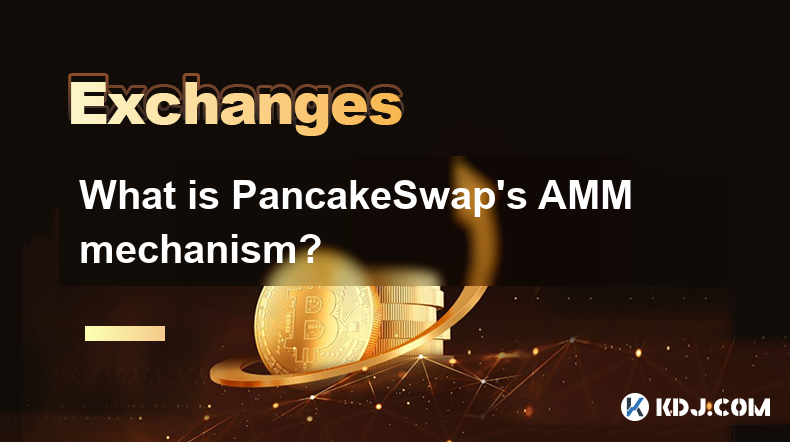
PancakeSwap is a decentralized exchange (DEX) built on the Binance Smart Chain (BSC) that utilizes an Automated Market Maker (AMM) mechanism to facilitate token swaps. The AMM model is a key component of decentralized finance (DeFi) platforms, enabling users to trade cryptocurrencies without the need for traditional order books. In this article, we will delve into the specifics of PancakeSwap's AMM mechanism, exploring how it functions, its benefits, and the role of liquidity pools.
Understanding the Basics of AMM
Automated Market Makers (AMMs) are algorithms that automatically set the price of assets in a liquidity pool based on a mathematical formula. Unlike traditional exchanges that rely on order books to match buyers and sellers, AMMs use liquidity pools to facilitate trades. In PancakeSwap, the AMM mechanism is powered by smart contracts that manage these liquidity pools.
The core of PancakeSwap's AMM is the constant product formula, often represented as x * y = k. Here, x and y represent the quantities of two different tokens in a liquidity pool, and k is a constant value. When a user swaps one token for another, the smart contract adjusts the quantities of x and y to maintain the constant k, thus determining the price of the tokens.
Liquidity Pools and Liquidity Providers
Liquidity pools are at the heart of PancakeSwap's AMM mechanism. These pools are collections of tokens locked in a smart contract that users can trade against. Liquidity providers (LPs) are individuals or entities that deposit an equal value of two tokens into a liquidity pool, thereby enabling trading on the platform.
When LPs add liquidity to a pool, they receive liquidity provider tokens (LP tokens) in return. These tokens represent their share of the pool and can be redeemed for the underlying assets at any time. The more liquidity a pool has, the more efficient and less slippage-prone the trades become.
The Role of Smart Contracts
Smart contracts are self-executing contracts with the terms of the agreement directly written into code. In PancakeSwap, smart contracts manage the liquidity pools, execute trades, and distribute rewards to liquidity providers. These contracts ensure that the AMM mechanism operates smoothly and transparently.
When a user initiates a swap on PancakeSwap, the smart contract calculates the amount of tokens to be exchanged based on the constant product formula. It then adjusts the pool's token balances accordingly, ensuring that the trade is executed at the best possible price given the current liquidity.
Benefits of PancakeSwap's AMM Mechanism
One of the primary benefits of PancakeSwap's AMM mechanism is decentralization. By eliminating the need for intermediaries, users can trade directly from their wallets, maintaining full control over their assets. This also reduces the risk of hacks and manipulation that can occur on centralized exchanges.
Another significant advantage is accessibility. Anyone can become a liquidity provider on PancakeSwap, contributing to the ecosystem and earning rewards in the form of trading fees and CAKE tokens. This democratizes access to liquidity provision, allowing more people to participate in the DeFi space.
Efficiency is also a key benefit. The AMM model allows for instant trades without the need for matching orders, resulting in faster transaction times. Additionally, the use of the Binance Smart Chain, which offers lower transaction fees compared to Ethereum, makes PancakeSwap an attractive option for users looking to minimize costs.
Trading and Slippage
When users trade on PancakeSwap, they may encounter slippage, which is the difference between the expected price of a trade and the price at which the trade is executed. Slippage occurs due to the constant product formula and the liquidity available in the pool at the time of the trade.
To mitigate slippage, users can set a slippage tolerance when initiating a swap. This tolerance determines the maximum percentage deviation from the expected price that the user is willing to accept. If the actual slippage exceeds this tolerance, the transaction will be rejected, protecting the user from unfavorable trades.
Yield Farming and Staking
Yield farming and staking are additional features that enhance the utility of PancakeSwap's AMM mechanism. Liquidity providers can stake their LP tokens in various farms to earn additional rewards, often in the form of CAKE tokens. This incentivizes users to provide liquidity, further enhancing the platform's liquidity and trading efficiency.
Staking CAKE tokens in PancakeSwap's Syrup Pools allows users to earn more CAKE or other tokens. This mechanism not only rewards users for holding CAKE but also helps to stabilize the token's value by encouraging long-term holding.
Frequently Asked Questions
Q: How does PancakeSwap ensure the security of its AMM mechanism?
A: PancakeSwap's AMM mechanism is secured by smart contracts that are audited by reputable third-party firms. These audits help identify and mitigate potential vulnerabilities, ensuring the safety of users' funds. Additionally, the decentralized nature of the platform reduces the risk of centralized points of failure.
Q: Can I use PancakeSwap on other blockchain networks besides BSC?
A: Currently, PancakeSwap operates primarily on the Binance Smart Chain. However, the platform's AMM mechanism is designed to be adaptable, and future expansions to other blockchain networks could be possible, depending on the development roadmap.
Q: What happens if a liquidity pool on PancakeSwap becomes imbalanced?
A: If a liquidity pool becomes imbalanced, it can lead to increased slippage and less efficient trades. To address this, PancakeSwap encourages liquidity providers to add or remove liquidity to rebalance the pool. Additionally, the platform may implement incentives or penalties to encourage balanced liquidity provision.
Q: How are trading fees distributed in PancakeSwap's AMM mechanism?
A: Trading fees on PancakeSwap are typically set at 0.25% per trade. These fees are distributed to liquidity providers proportional to their share of the pool. This incentivizes users to provide liquidity and helps maintain the health of the platform's liquidity pools.
Disclaimer:info@kdj.com
The information provided is not trading advice. kdj.com does not assume any responsibility for any investments made based on the information provided in this article. Cryptocurrencies are highly volatile and it is highly recommended that you invest with caution after thorough research!
If you believe that the content used on this website infringes your copyright, please contact us immediately (info@kdj.com) and we will delete it promptly.
- Bitcoin's Pattern Break: Are HODLers the Key to the Next Surge?
- 2025-07-04 18:50:12
- Bitcoin Price, Trump's Bill, and the $150K Dream: A NYC Take
- 2025-07-04 19:50:12
- Ethereum, LILPEPE, and the July Bounce: Will Pepe Steal ETH's Thunder?
- 2025-07-04 19:10:12
- Binance Institutional Loans: Unlocking 4x Leverage and Zero Interest for Whales
- 2025-07-04 19:15:12
- Bitcoin Bull Run: Analysts Eye Peak in Late 2025?
- 2025-07-04 19:20:13
- Pepe Indicators, Bullish Forecast: Can the Meme Coin Rally?
- 2025-07-04 19:25:12
Related knowledge
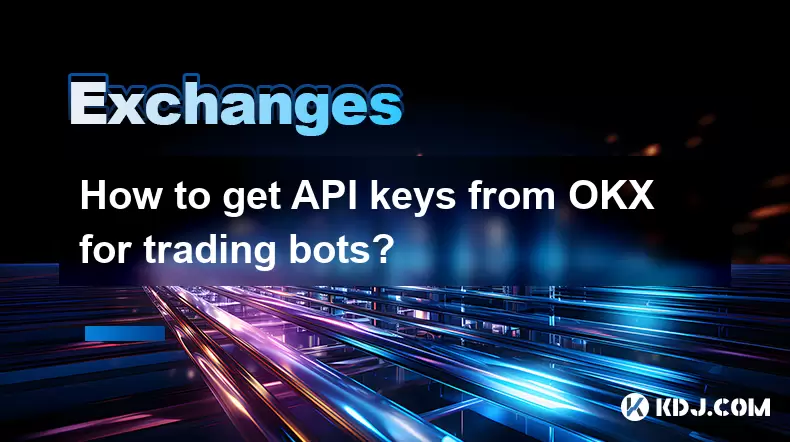
How to get API keys from OKX for trading bots?
Jul 03,2025 at 07:07am
Understanding API Keys on OKXTo interact with the OKX exchange programmatically, especially for building or running trading bots, you need to obtain an API key. An API (Application Programming Interface) key acts as a secure token that allows your bot to communicate with the exchange's servers. On OKX, these keys come with customizable permissions such ...
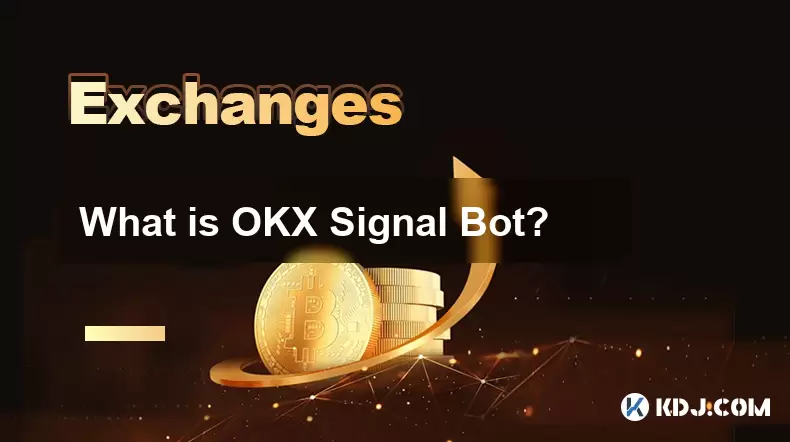
What is OKX Signal Bot?
Jul 02,2025 at 11:01pm
Understanding the Basics of OKX Signal BotThe OKX Signal Bot is a feature within the OKX ecosystem that provides users with automated trading signals and execution capabilities. Designed for both novice and experienced traders, this bot helps identify potential trading opportunities by analyzing market trends, technical indicators, and historical data. ...
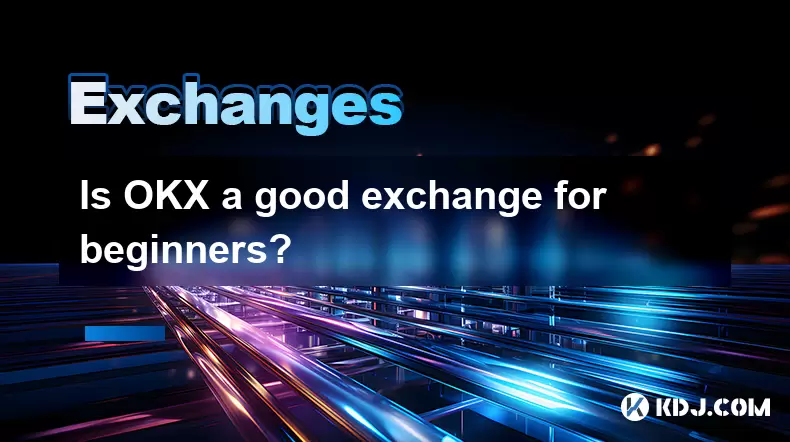
Is OKX a good exchange for beginners?
Jul 03,2025 at 05:00pm
What Is OKX and Why Is It Popular?OKX is one of the leading cryptocurrency exchanges globally, known for its robust trading infrastructure and a wide variety of digital assets available for trading. It supports over 300 cryptocurrencies, including major ones like Bitcoin (BTC), Ethereum (ETH), and Solana (SOL). The platform has gained popularity not onl...
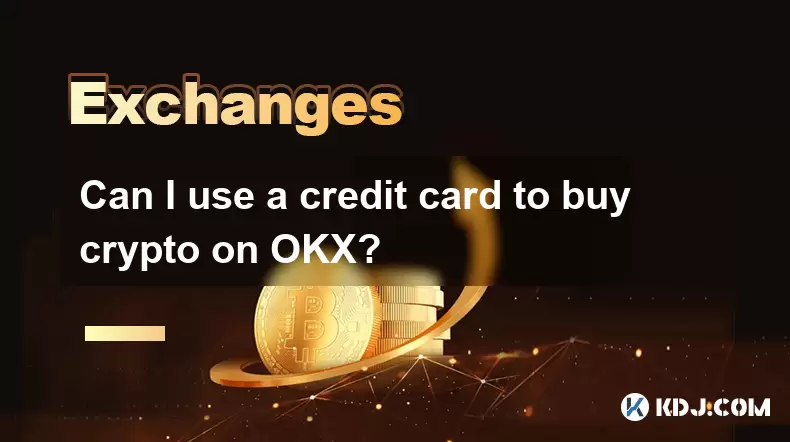
Can I use a credit card to buy crypto on OKX?
Jul 04,2025 at 04:28am
Understanding OKX and Credit Card PaymentsOKX is one of the leading cryptocurrency exchanges globally, offering a wide range of services including spot trading, derivatives, staking, and more. Users often wonder whether they can use a credit card to buy crypto on OKX, especially if they are new to the platform or looking for quick ways to enter the mark...
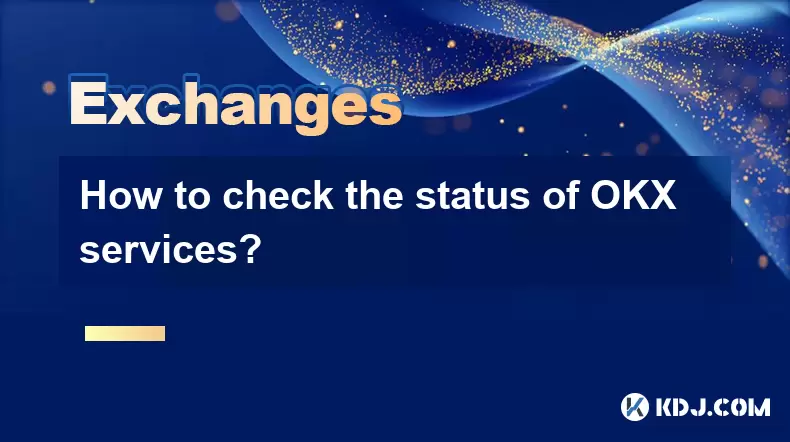
How to check the status of OKX services?
Jul 02,2025 at 11:14pm
What is OKX, and Why Checking Service Status Matters?OKX is one of the world’s leading cryptocurrency exchanges, offering services such as spot trading, futures trading, staking, and more. With millions of users relying on its platform for daily transactions, it's crucial to know how to check the status of OKX services. Downtime or maintenance can affec...
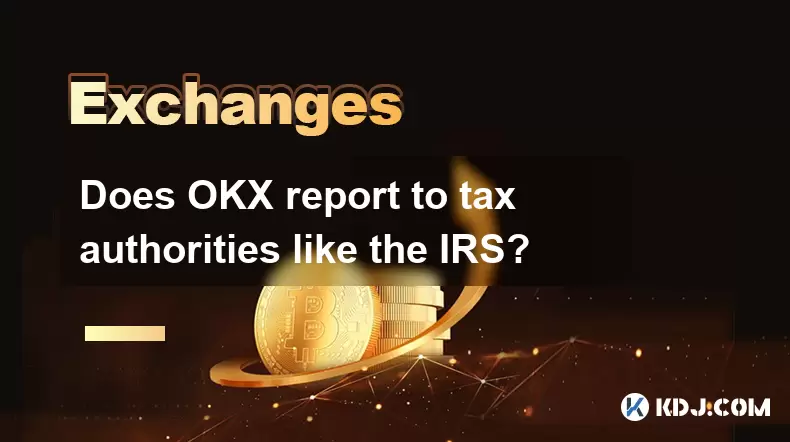
Does OKX report to tax authorities like the IRS?
Jul 03,2025 at 03:14pm
Understanding the Role of Cryptocurrency Exchanges in Tax ReportingCryptocurrency exchanges play a crucial role in facilitating digital asset transactions, but their responsibilities extend beyond trading and custody. As regulatory scrutiny intensifies globally, users are increasingly concerned about whether platforms like OKX report to tax authorities ...

How to get API keys from OKX for trading bots?
Jul 03,2025 at 07:07am
Understanding API Keys on OKXTo interact with the OKX exchange programmatically, especially for building or running trading bots, you need to obtain an API key. An API (Application Programming Interface) key acts as a secure token that allows your bot to communicate with the exchange's servers. On OKX, these keys come with customizable permissions such ...

What is OKX Signal Bot?
Jul 02,2025 at 11:01pm
Understanding the Basics of OKX Signal BotThe OKX Signal Bot is a feature within the OKX ecosystem that provides users with automated trading signals and execution capabilities. Designed for both novice and experienced traders, this bot helps identify potential trading opportunities by analyzing market trends, technical indicators, and historical data. ...

Is OKX a good exchange for beginners?
Jul 03,2025 at 05:00pm
What Is OKX and Why Is It Popular?OKX is one of the leading cryptocurrency exchanges globally, known for its robust trading infrastructure and a wide variety of digital assets available for trading. It supports over 300 cryptocurrencies, including major ones like Bitcoin (BTC), Ethereum (ETH), and Solana (SOL). The platform has gained popularity not onl...

Can I use a credit card to buy crypto on OKX?
Jul 04,2025 at 04:28am
Understanding OKX and Credit Card PaymentsOKX is one of the leading cryptocurrency exchanges globally, offering a wide range of services including spot trading, derivatives, staking, and more. Users often wonder whether they can use a credit card to buy crypto on OKX, especially if they are new to the platform or looking for quick ways to enter the mark...

How to check the status of OKX services?
Jul 02,2025 at 11:14pm
What is OKX, and Why Checking Service Status Matters?OKX is one of the world’s leading cryptocurrency exchanges, offering services such as spot trading, futures trading, staking, and more. With millions of users relying on its platform for daily transactions, it's crucial to know how to check the status of OKX services. Downtime or maintenance can affec...

Does OKX report to tax authorities like the IRS?
Jul 03,2025 at 03:14pm
Understanding the Role of Cryptocurrency Exchanges in Tax ReportingCryptocurrency exchanges play a crucial role in facilitating digital asset transactions, but their responsibilities extend beyond trading and custody. As regulatory scrutiny intensifies globally, users are increasingly concerned about whether platforms like OKX report to tax authorities ...
See all articles

























































































